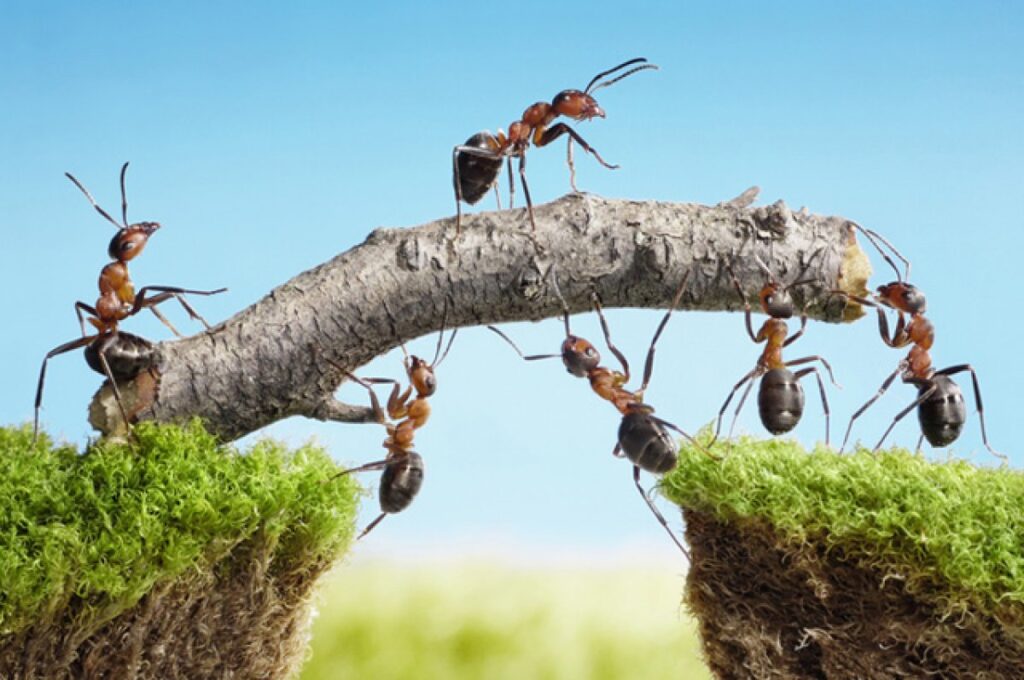Ants are some of the most resilient creatures on Earth, known for their remarkable ability to adapt to and survive in a wide range of environments.
From the frozen tundra of the Arctic to the scorching deserts, ants have managed to thrive in conditions that would challenge most other species. So, how do these tiny insects endure such extreme environments?
In this article, we’ll explore the unique behaviors, physical adaptations, and survival strategies that enable ants to survive in harsh conditions.
Social Structure and Division of Labor
One of the key factors behind the survival of ants in harsh conditions is their social structure.
Ants are eusocial insects, meaning they live in highly organized colonies where different individuals perform specialized roles.
This division of labor enhances their collective ability to survive in extreme conditions.
- Worker ants are responsible for foraging, building nests, and defending the colony.
- Soldiers provide protection against predators or threats.
- Queen ants lay eggs, ensuring the survival and growth of the colony.
This division of labor allows the colony to respond quickly to environmental changes, ensuring that each member contributes to the survival of the group as a whole.
When conditions become too harsh, such as extreme heat or cold, ants can work together to find food, protect the nest, and ensure the queen’s survival.
Physical Adaptations to Extreme Temperatures
Ants are found in a variety of climates, from the ice-covered regions of Antarctica to the sun-baked deserts.
In order to survive in such diverse environments, ants have developed a number of physical adaptations.
In Cold Environments:
In colder climates, such as those in the northern parts of the world, ants must contend with freezing temperatures and snow. To survive, they employ several strategies:
- Hibernation: Many ants enter a state of dormancy during the winter months, reducing their metabolic rate and conserving energy. The colony may retreat to deeper underground chambers where the temperature remains stable and insulated.
- Insulated Nesting: Some species of ants, such as the Formica ants, build nests in deep soil or within logs where they are insulated from the cold, creating a microclimate that remains above freezing.
In Hot Environments:
Ants that live in hot, arid regions, such as deserts, have developed several mechanisms to cope with extreme heat:
- Nocturnal Activity: Many desert-dwelling ants, such as the Desert Harvester Ants (Pogonomyrmex), are primarily nocturnal. By foraging during the cooler night hours, they avoid the intense daytime heat.
- Thermal Regulation: Ants like the Mexican leaf-cutter ants construct their nests deep underground, where temperatures remain more stable and cooler compared to the surface. Some species can also adjust the microclimate of their nests through ventilation and by strategically placing rocks or other materials to provide shade.
Water Conservation and Management
Water is a precious resource, especially in environments where it is scarce, such as deserts. Ants have evolved several techniques for conserving and managing water.
- Water Storage: Some species of ants, like the Camponotus ants, store water in specialized body parts, such as the abdomen. These water reserves can be used during periods of drought or when external water sources are unavailable.
- Efficient Foraging: In desert environments, ants forage in a way that maximizes their chances of finding water sources. They may follow subtle moisture gradients in the environment, using their keen sense of smell to locate the smallest amounts of water.
Behavioral Adaptations for Survival
Ants also exhibit behavioral adaptations that help them survive harsh conditions.
- Food Sharing and Resource Management: In times of scarcity, ants rely on trophallaxis, a behavior where ants share food and liquids by regurgitating them for other colony members. This ensures that the colony survives when food is in short supply.
- Nest Relocation: If the colony’s nest becomes compromised due to extreme conditions, such as flooding or extreme heat, ants have been observed relocating their nest to a safer location. They can move an entire colony quickly and efficiently, ensuring the survival of the queen and brood.

Resilience to Predators and Diseases
In harsh environments, predators and disease are constant threats. Ants have developed several ways to protect themselves and their colonies from these dangers.
- Chemical Defense: Many ant species secrete potent chemicals or pheromones that can repel predators or mark territory to warn other ants of danger. Some species, such as the Bulldog Ants of Australia, can deliver painful stings that deter potential threats.
- Cooperative Defense: Ants are not only adept at defending themselves but are highly cooperative in protecting the colony. In the case of an attack, worker ants will swarm and fight off predators in unison, working as a cohesive unit to drive off threats.
Evolutionary Adaptations: Specialized Species
The variety of ant species across the globe showcases the incredible adaptability of these insects. Different species have evolved unique strategies to cope with the specific challenges posed by their environments.
- Leaf-Cutter Ants: These ants have evolved a complex mutualistic relationship with fungi. They cut leaves, which they use to cultivate a fungal crop that serves as their primary food source. This specialized farming behavior allows them to thrive in environments where food is not readily available.
- Army Ants: Known for their nomadic lifestyle, army ants do not establish permanent nests. Instead, they move in large, organized groups to hunt and forage, always on the move to find food. Their highly organized raids allow them to gather enough resources to sustain the colony.
Conclusion: Ants’ Remarkable Resilience
Ants’ ability to survive in harsh conditions is a testament to their evolutionary success.
Whether through social cooperation, physical adaptations, or behavioral strategies, ants have evolved to thrive in environments where many other species would struggle to survive.
From the frozen tundra to the arid desert, ants show that even the smallest creatures can survive and even thrive in some of the harshest environments on Earth.
Their resilience and adaptability continue to fascinate scientists, and their survival strategies offer valuable insights into the nature of survival in the wild.
As we learn more about these remarkable insects, we gain not only a deeper understanding of the natural world but also the inspiration to persevere in the face of adversity, much like the ants themselves.




Your comment is awaiting moderation.
I was drawn into your words immediately, not just by the ideas, but by the warmth they radiate.